I know it’s a naff way to start but I didn’t intend to buy this camera. Apart from a couple of favourites that I use on a regular basis I’ve got a waiting list of more than enough cameras sitting in the display cabinet to be tried out at least once. But an extra lens or two is a different matter. So it was while browsing you know where for Rokkor lenses that I came across it. At a very reasonable buy it now price and described as in good condition with all functions working I started to make excuses. I like Minoltas, I haven’t got a Hi-Matic of any sort, it might be useful for my partner if she’s serious about taking up film as mentioned in my last article.
It wasn’t until Pay Now had been clicked that I did any research on the Minolta Hi-Matic G. Apart from some nerdy discussions about whether it’s a real Minolta it doesn’t appear to be a camera that excites violent passions for or against. There’s a recent appraisal here on 35mmc which must have passed me by at the time and a few others elsewhere on the web. I got the feeling that anodyne is the somewhat limited consensus of opinion to describe this camera. Not necessarily a bad thing for something for Josie to carry around and snap away with.
When it arrived I realised again that those old Romans knew a thing or two when they coined the phrase “caveat emptor”. The camera bore the scars of a knock at a corner of the top plate, a knock which presumably had also caused a bend to the spindle of the rewind. Also, if the needle in the viewfinder was to be believed, it appeared to be under-exposing by two stops. On the plus side it came with the dedicated shorty lens hood which is the same diameter as the lens barrel so that the lens cap can fit over it.
So much for the visual inspection, did it actually work or was it to be consigned to the display cabinet? To find out I loaded it with HP5+, set the ASA dial for 200 and we took a stroll down the High Street to one of the smaller parks in our vicinity taking turns shooting anything that took our fancy.
Josie: What sort of thing?
Pete: Well, how about that? Should make a good shot.
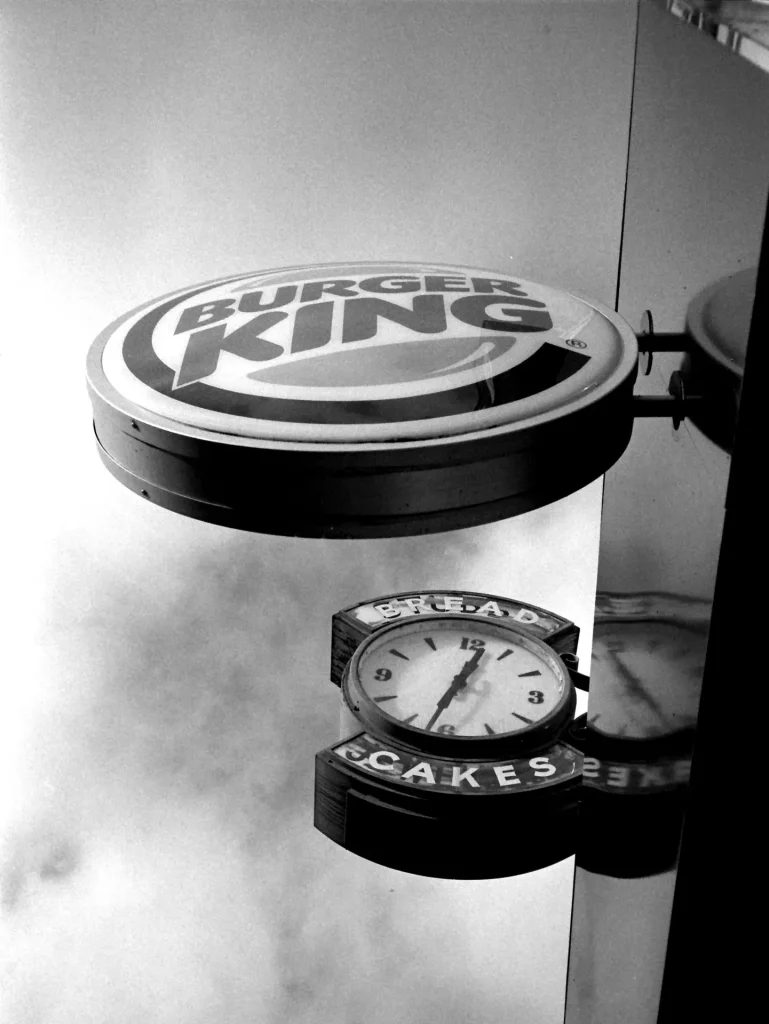
Our High Street has a couple of Grade 2 Listed buildings now looking a bit woebegone. One of these is Cliefden, an early 18th century town house which has in its time been not only home to well-heeled families but a Preparatory Military Academy for Young Gentlemen no less. Its High Street frontage retains the original doorway, although with a later but still very old door and fanlight, which is now flanked by a pawnbrokers on one side a Costa Coffee on the other. The two upper floors are low-cost offices one of which unconsciously echoes the building’s past educational use.
Pete: The light’s picking out the door nicely.
Josie: Shall I take it from here?
Pete: No, back a bit. Try and get it square.
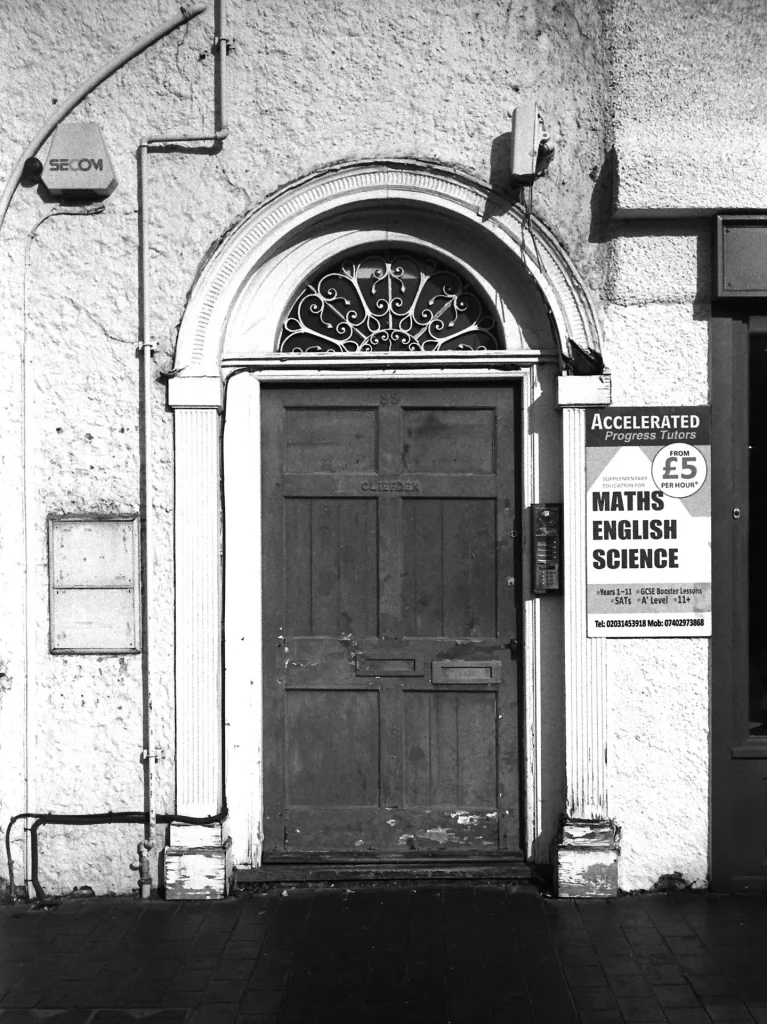
It is unclear whether The Greyhound, the other listed building, was originally built as a hostelry but it was certainly functioning as such in the early 19th century when it was one of the inns where parish business was transacted. These meetings of parochial worthies appear to have been well lubricated affairs as the parish accounts for 1812 list the amount expended for refreshments over the past year as £39 12s 10d, a huge amount for the time. Sadly, Ye Olde Greyhound as it became, having latterly spent a few years as an Indian restaurant, is now boarded up.
Josie: Are we doing The Greyhound then?
Pete: I don’t think so. There’s too much clutter in front. There’s the ghost sign on the wall at the side though.
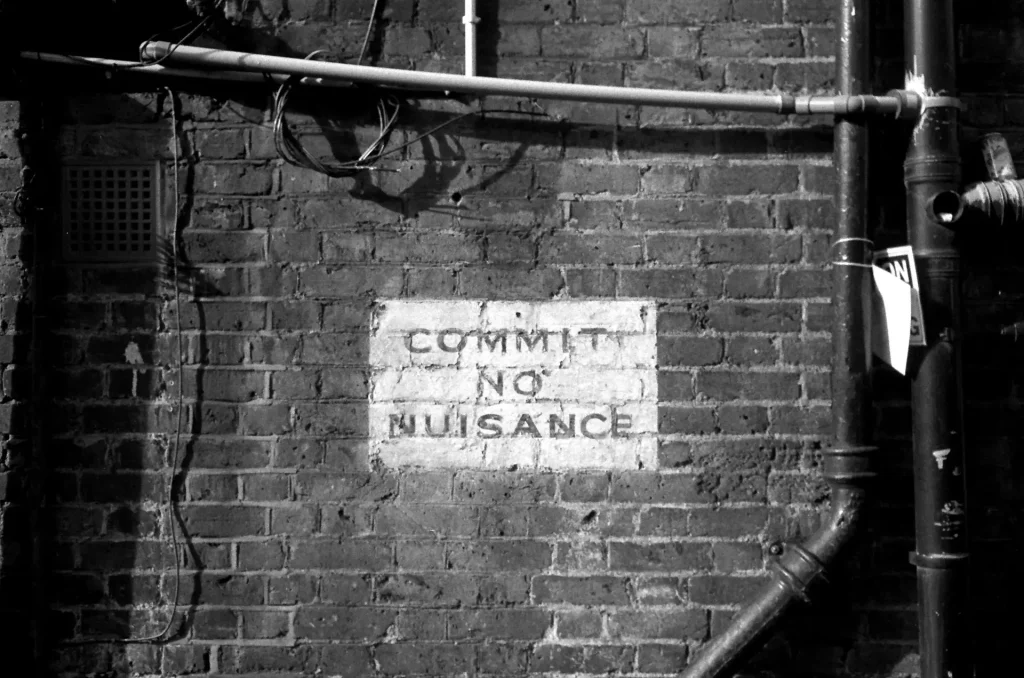
Opposite The Greyhound and on our way to the park is one Burtons Menswear impressive 1930s buildings. By the late 1930s Burtons had amassed 595 stores, most of them purpose built. Almost as much into property development as they were menswear, they had an in-house architects department that was responsible for instantly recognisable, but not standardised, designs, preferably on corner sites. Montague Burton was a supporter of the Temperance Movement and the first floors of his buildings were often temperance billiard halls with the other floors being rented out offices or flats for Burtons employees. The ground floor is now a Macdonalds but interestingly the first floor is still a billiards hall.
Pete: Quick. You’ve got the camera. See how the sun’s highlighting that lady’s face.
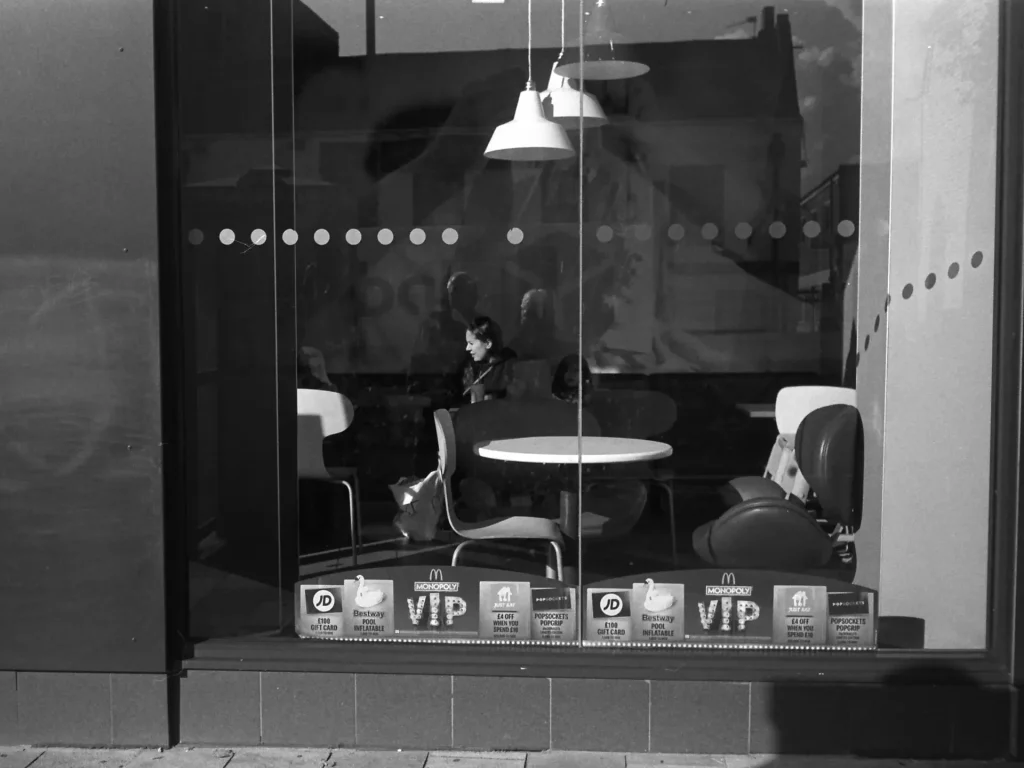
And so down the hill to the park at last. Well, I say park, it’s officially a pleasaunce. Well Hall Pleasaunce, to give it its full name, laid out as a network of themed gardens in the 1930s, was the brainchild of local social reforming politician William Barefoot. It is set in the grounds of the former Well Hall House which from 1899 to 1922 was the home of Edith Nesbit of The Railway Children Fame. Early members of the Fabian Society, Edith and her husband Hubert Bland were a liberated couple and kept a chaotic open house, frequent visitors included H. G. Wells and George Bernard Shaw. Well Hall House, built on the site of a moated Tudor mansion, was demolished during the creation of the pleasauce but an over-renovated Tudor barn remains and functions as an eponymous restaurant.
Josie: I’d like to do some water.
Pete: How about here? Against the light, get some reflections. Like there, look……..Oh!
Still, my daughter liked it, said it could be the illustration for an M. R. James ghost story.
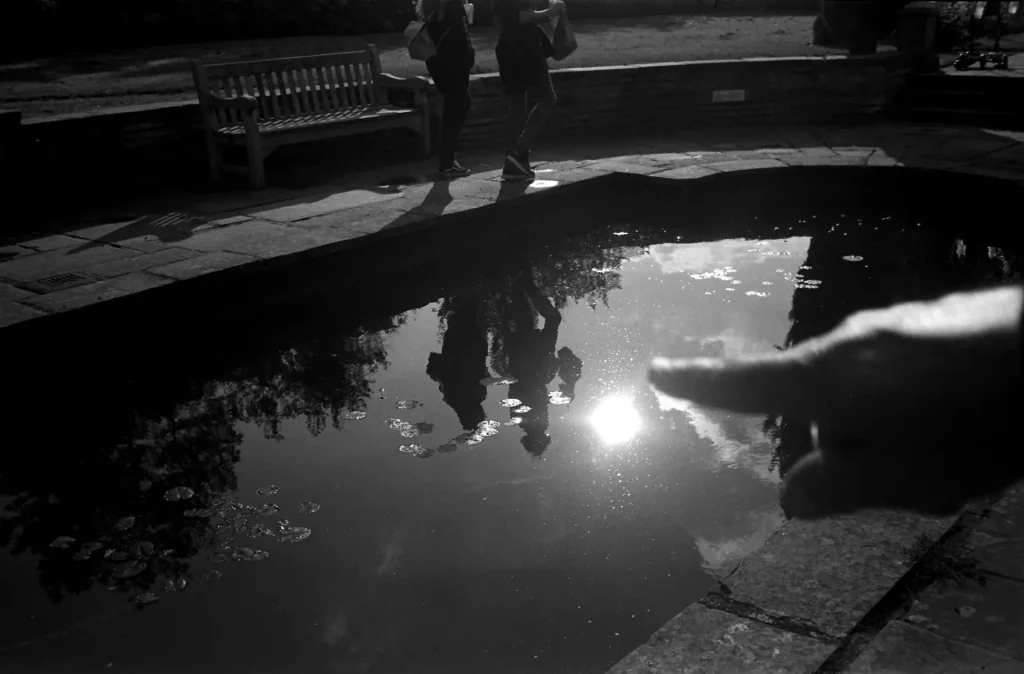
I would normally have used ID.11 to develop HP5+ but not having any to hand I used R09. This seems to have produced not unpleasant contrasty images albeit with some loss of shadow detail and may be worth trying again.
Josie: I like this camera.
Pete: Pity. So do I, very much.
Thanks for reading.
Share this post:









Comments
Murray Kriner on 5 Frames with a Minolta Hi-Matic G – A Joint Effort – By Peter Roberts
Comment posted: 06/01/2022
Comment posted: 06/01/2022
Gil Aegerter on 5 Frames with a Minolta Hi-Matic G – A Joint Effort – By Peter Roberts
Comment posted: 06/01/2022
Comment posted: 06/01/2022